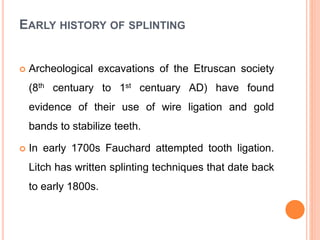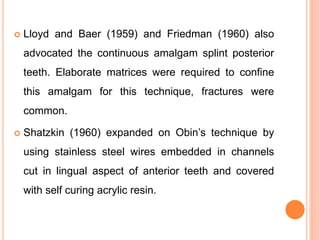This document provides an overview of dental splinting. It begins with definitions and a history of splinting. It describes the biologic and clinical rationales for splinting teeth, including redistributing forces and preserving arch integrity. The document outlines indications and contraindications for splinting. It classifies splints as temporary, provisional, or permanent. Examples of different splint types are described, including extracoronal, intracoronal, and fiber-reinforced splints.












































































